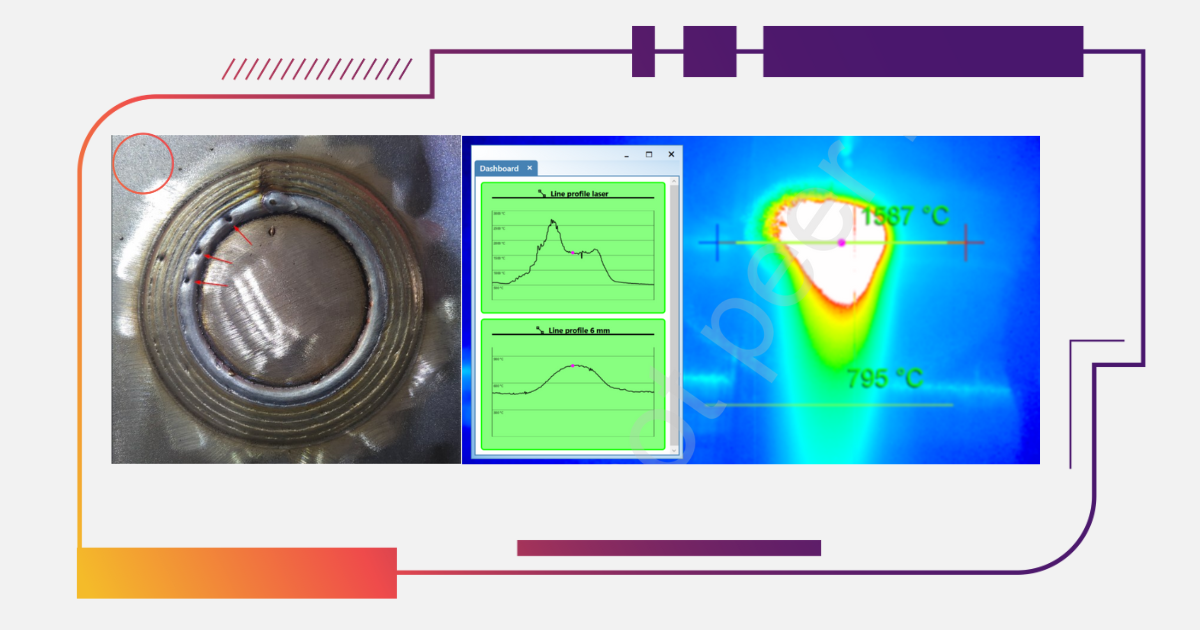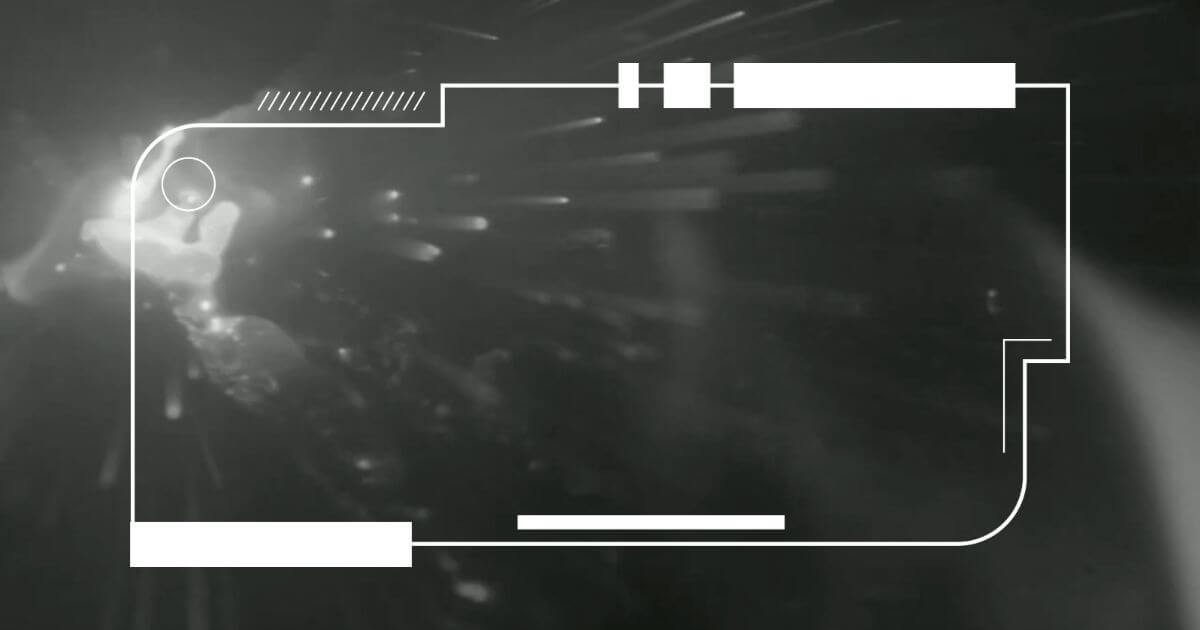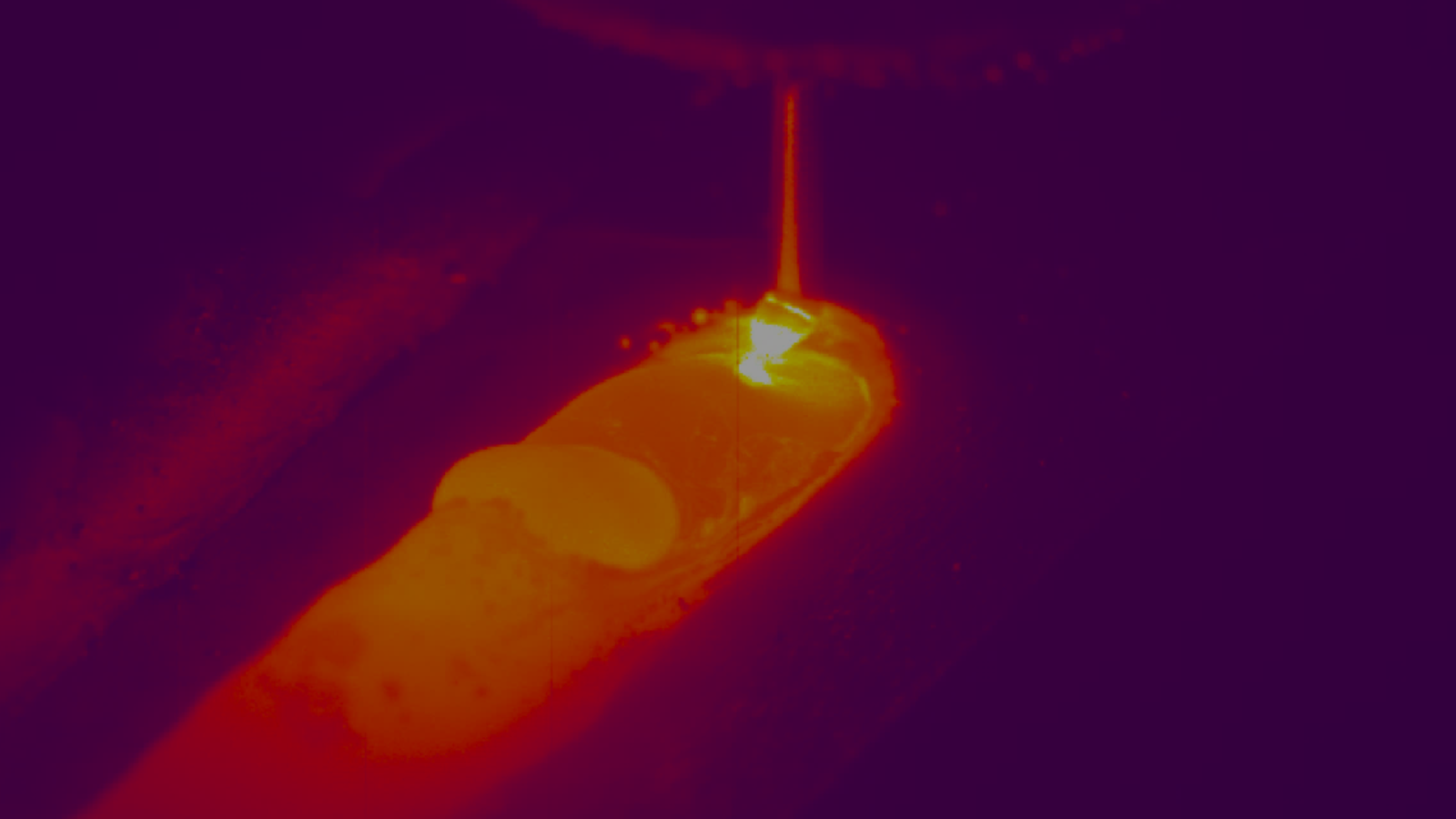At Xiris, our goal is to deliver the highest-quality weld monitoring solutions, ensuring that critical features like the melt pool, weld bead, electrode, and groove are captured with maximum clarity. One of the key innovations that helps us achieve this is imaging in the near-infrared (NIR) range. NIR imaging consistently provides exceptional image quality and detail during welding processes—revealing features that are often obscured in visible light.
So why does weld monitoring in NIR offer such clear advantages? To understand this, we need to consider what we are actually seeing when observing a welding scene.
Whether it's a welder, operator, or a weld camera doing the observing, the scene is illuminated by two main sources: the arc and the molten steel. Both are extremely bright, but the arc is significantly more intense. In visible light, this intense arc becomes the dominant light source, reflecting off all nearby surfaces and illuminating the entire scene. This bright arc often overwhelms the image, outshining the white-hot molten steel of the melt pool.
While it is useful to have a strong light source, it comes with drawbacks. In short-circuit and pulsed Gas Metal Arc Welding (GMAW), the arc light is constantly fluctuating. These pulsations make it an inconsistent illumination source for the features we truly want to monitor—like the melt pool, weld groove, electrode tip, and weld bead. On top of that, fumes and spatter reflect and scatter arc light, further obscuring visibility and reducing the reliability of image-based measurements.

NIR imaging significantly reduces these issues. The arc emits several times less light in the NIR spectrum compared to visible and ultraviolet light, as confirmed by both academic research and internal measurements conducted at Xiris Automation. This results in much lower arc glare, helping cameras better distinguish key features of the weld.
At the same time, the melt pool and surrounding hot surfaces emit more light in the NIR spectrum than in the visible range. Why? According to Planck’s Law, all hot objects emit light across a wide range of wavelengths, and the distribution of this emission depends on temperature. For high temperatures like those seen during steel welding, the peak of this emission curve falls just beyond the visible spectrum—into the infrared. This means the melt pool radiates several times more light in the NIR, making it appear brighter and more defined.
In the NIR spectrum, not only is the arc less dominant, but the melt pool and cooling weld bead are more visible. The overall balance of light—less interference from the arc and stronger signals from the objects of interest—makes it easier for cameras to capture high-contrast, high-precision images of the welding scene.
With clearer visualization of the melt pool, cooling bead, and background, NIR cameras provide a powerful advantage for weld monitoring—delivering superior image clarity where it matters most.





.png)


